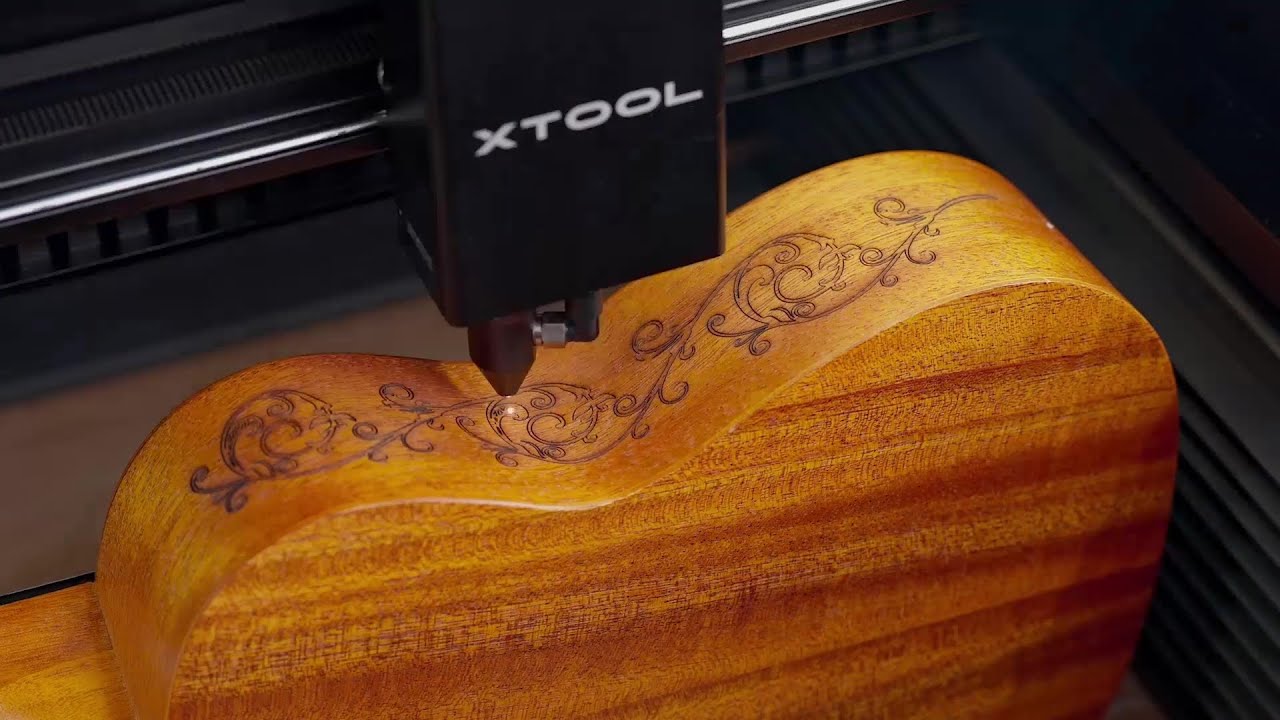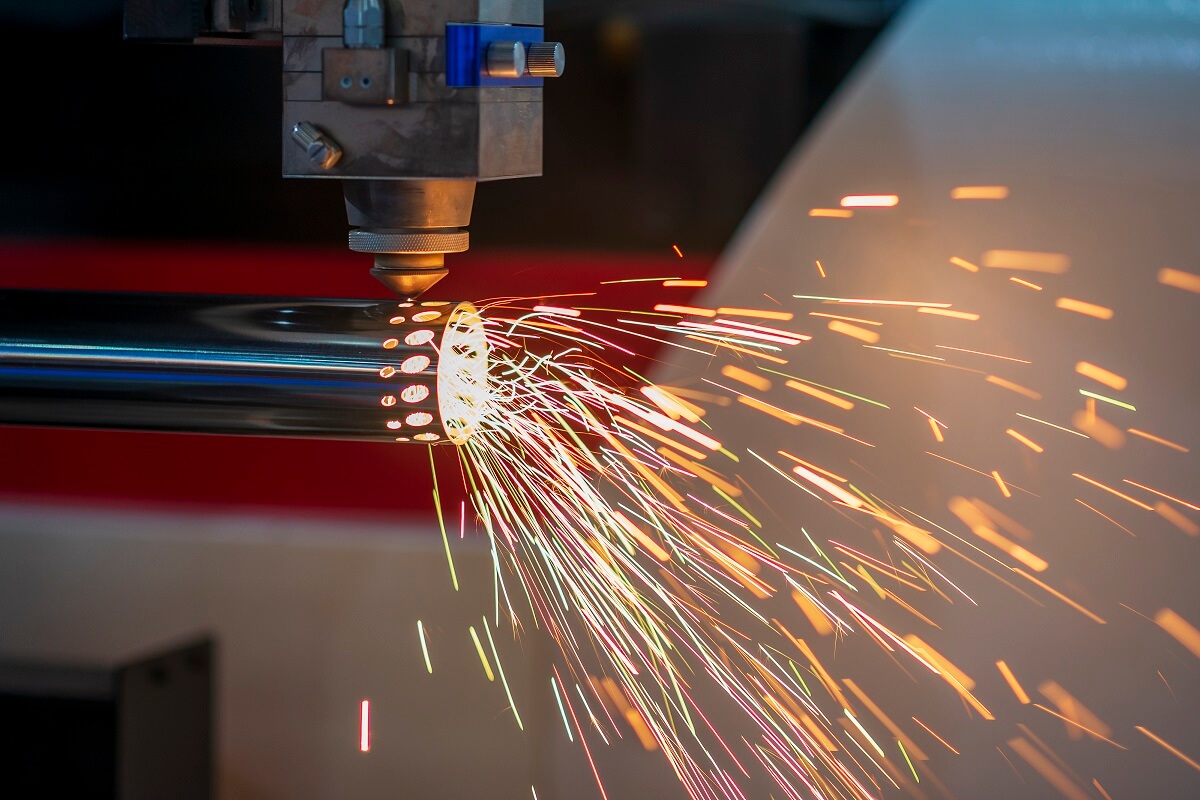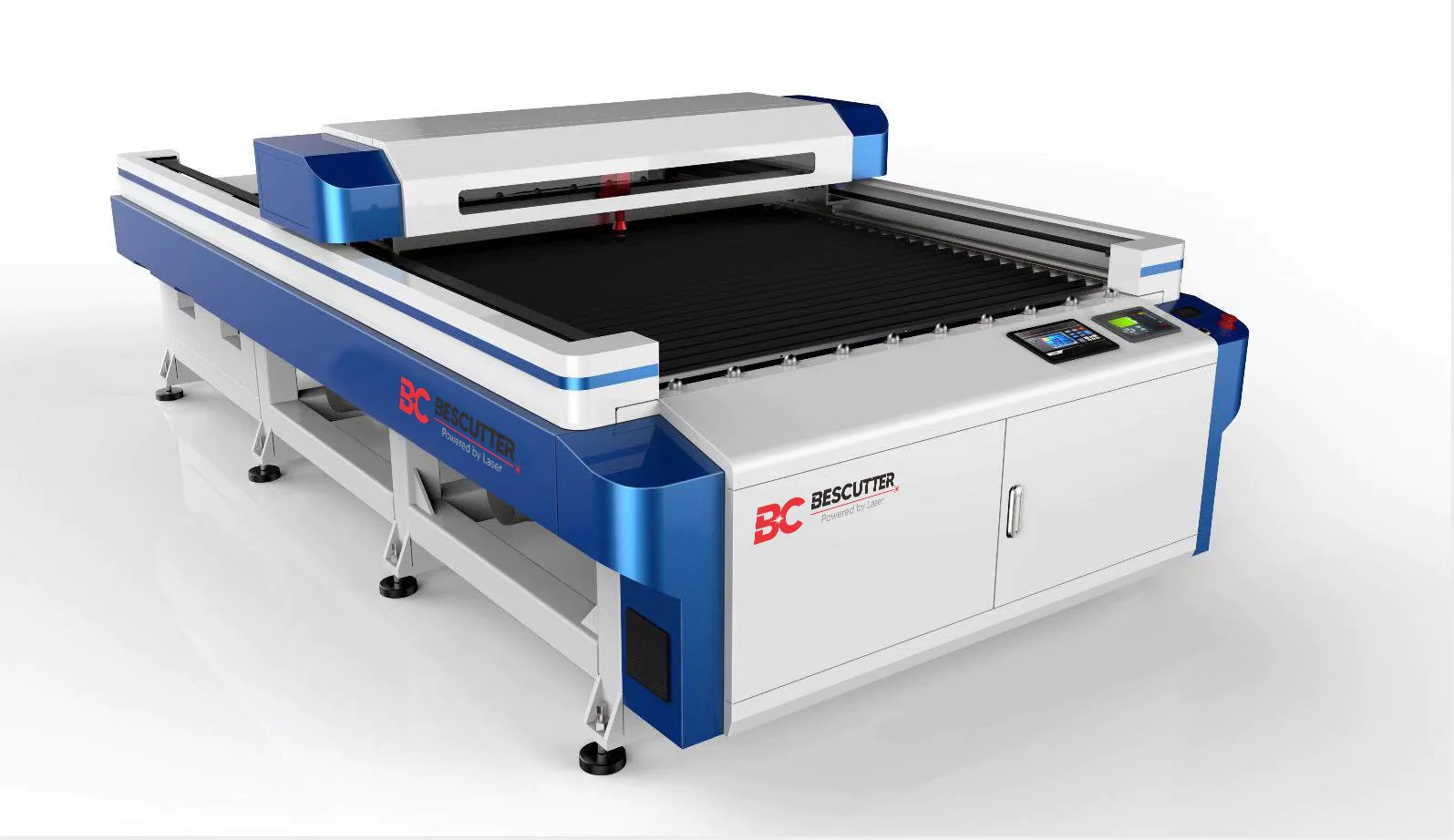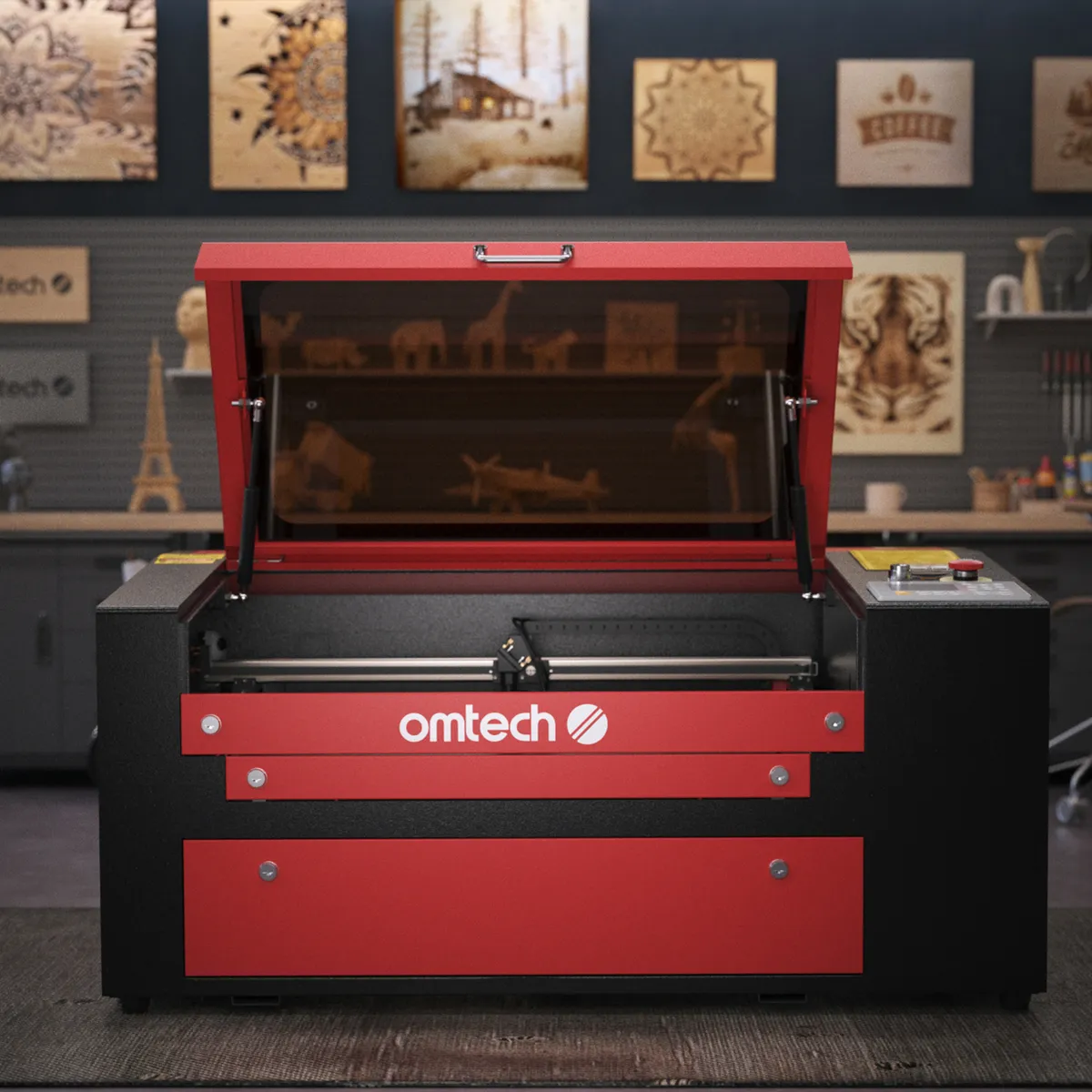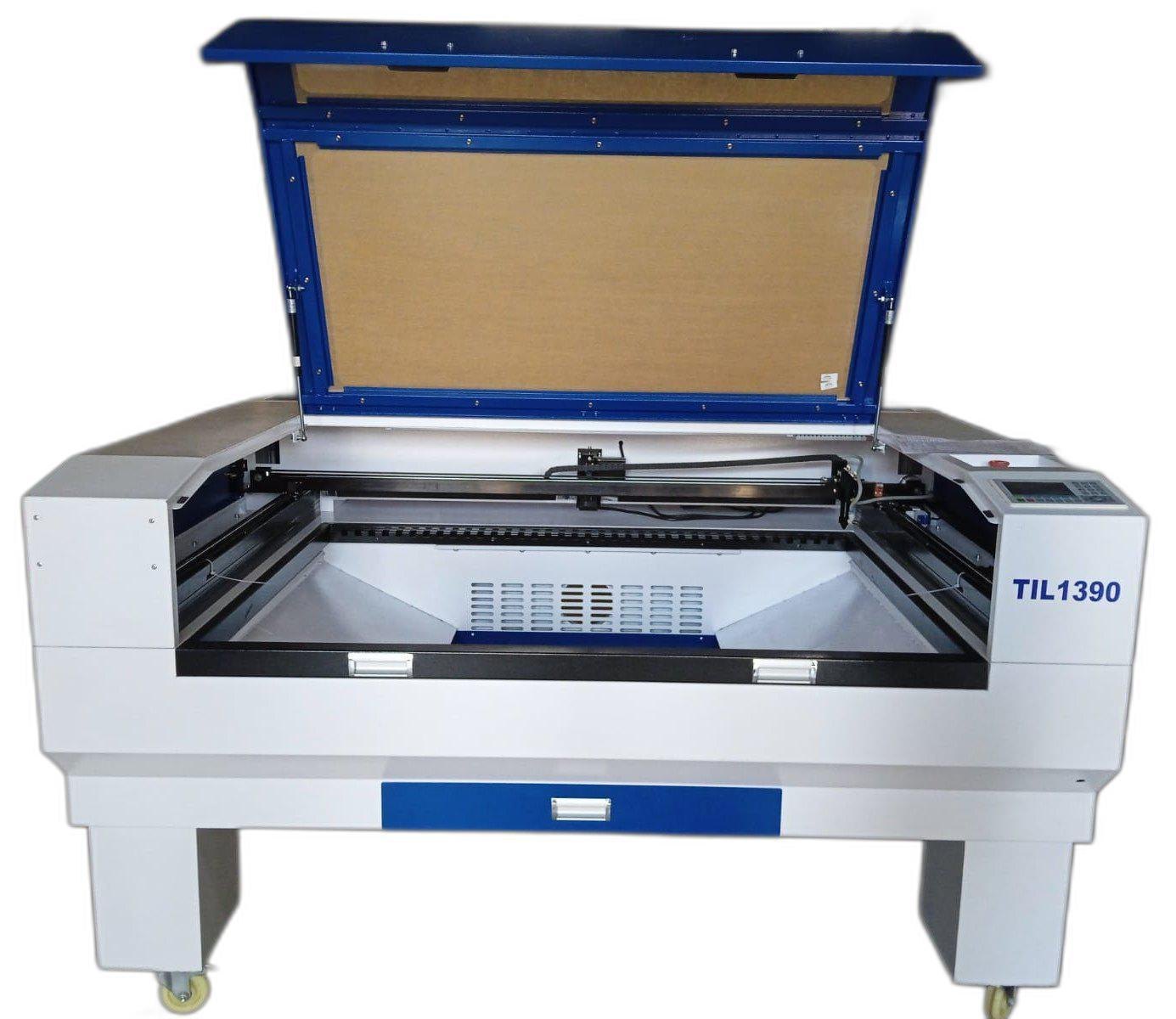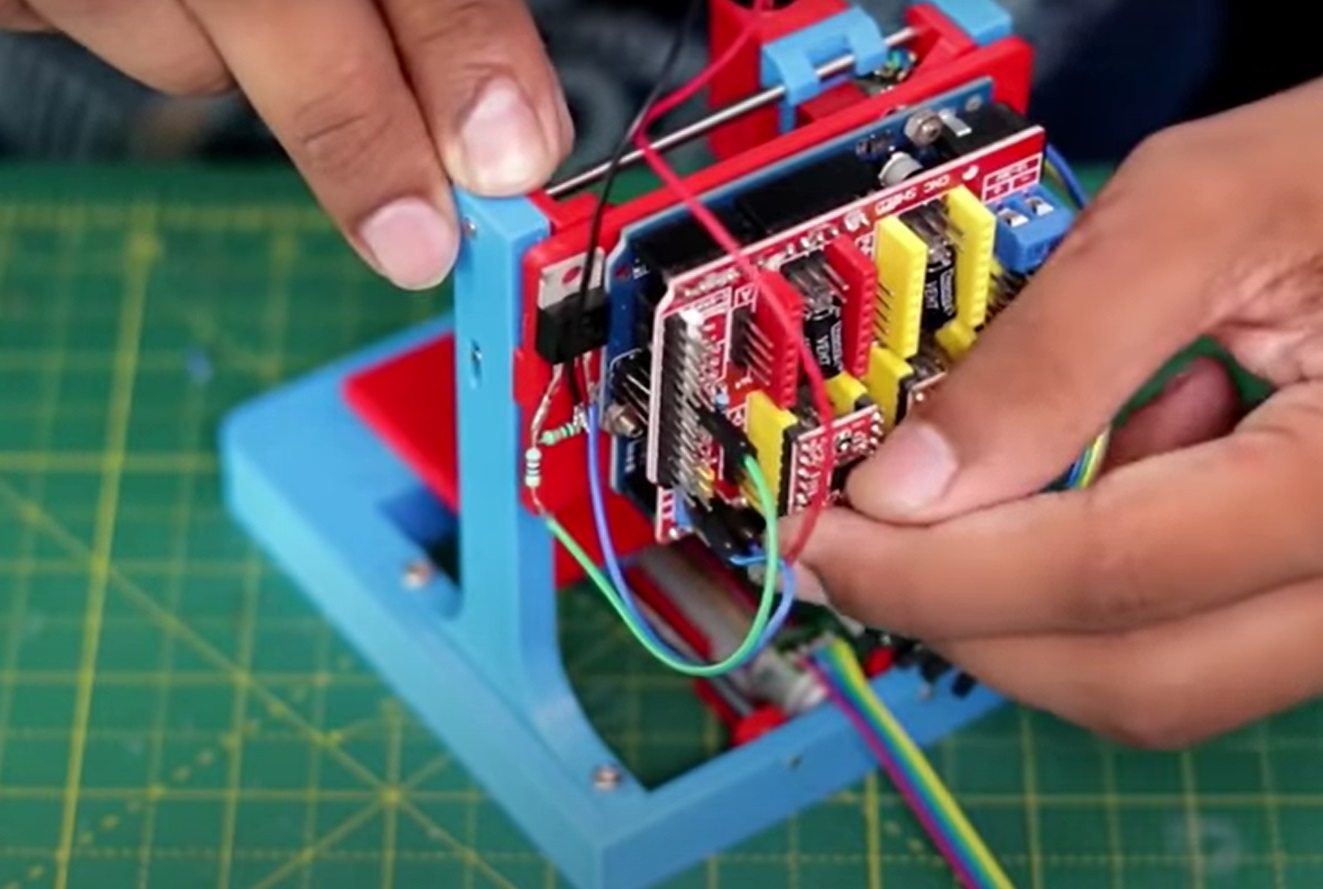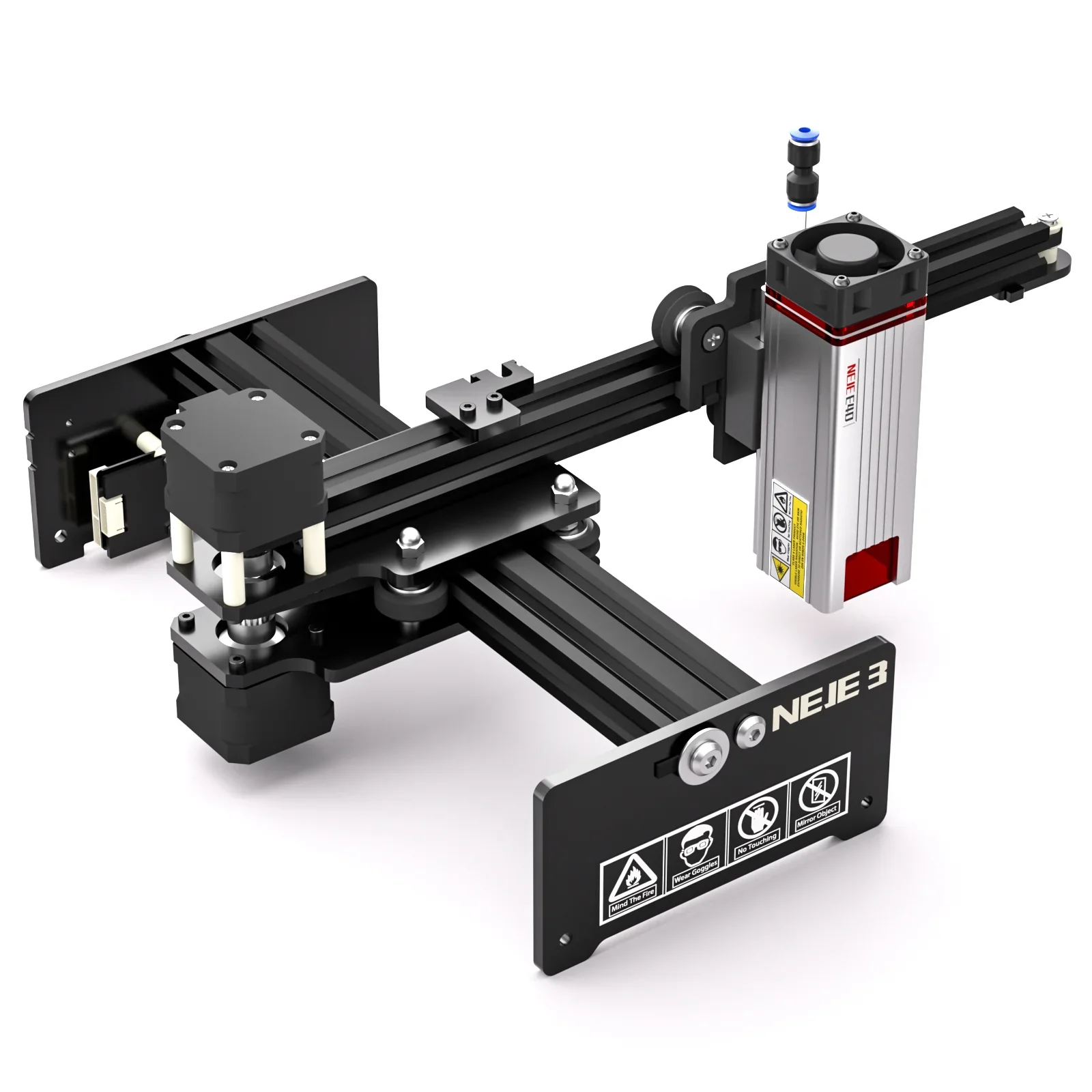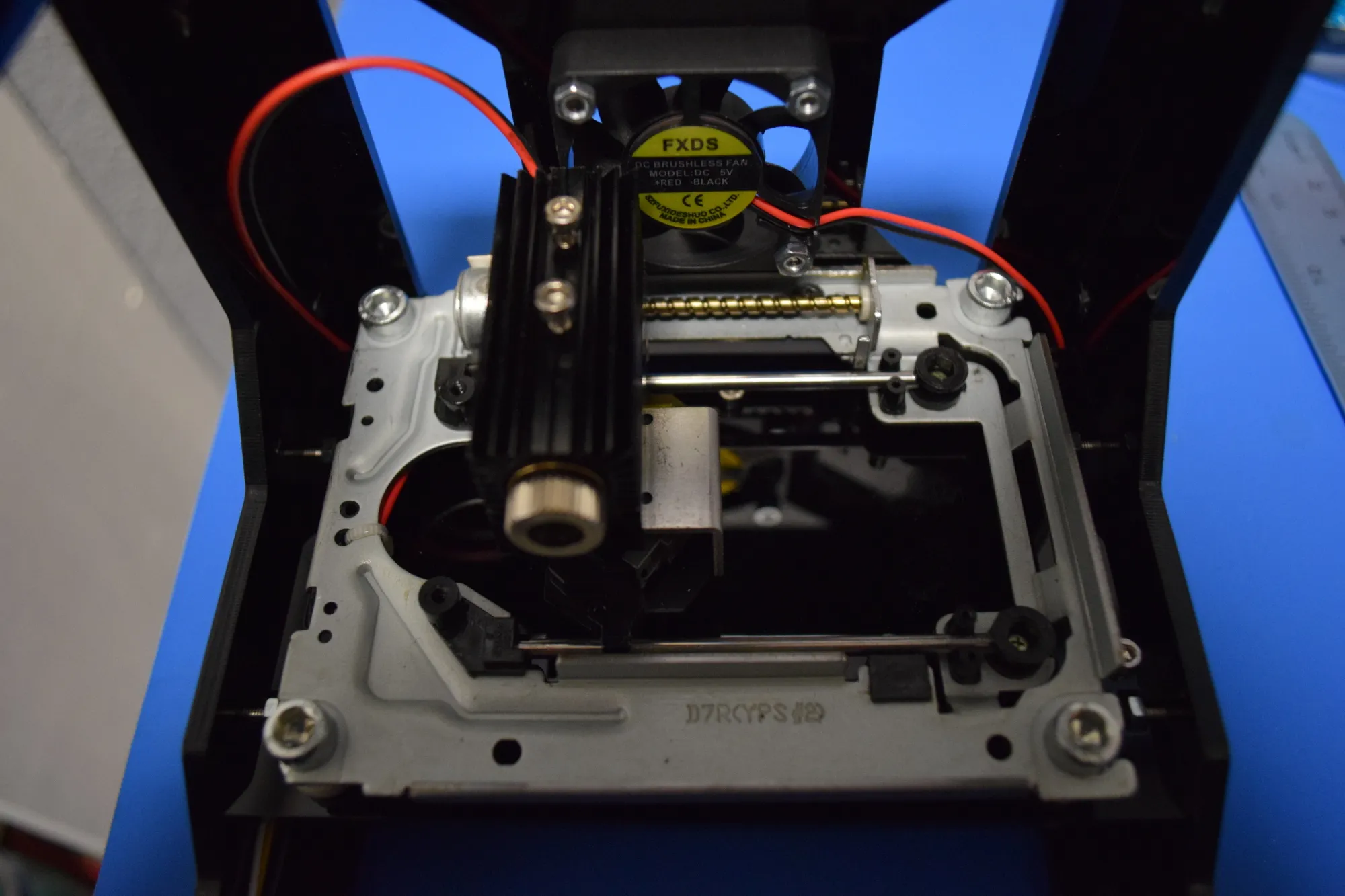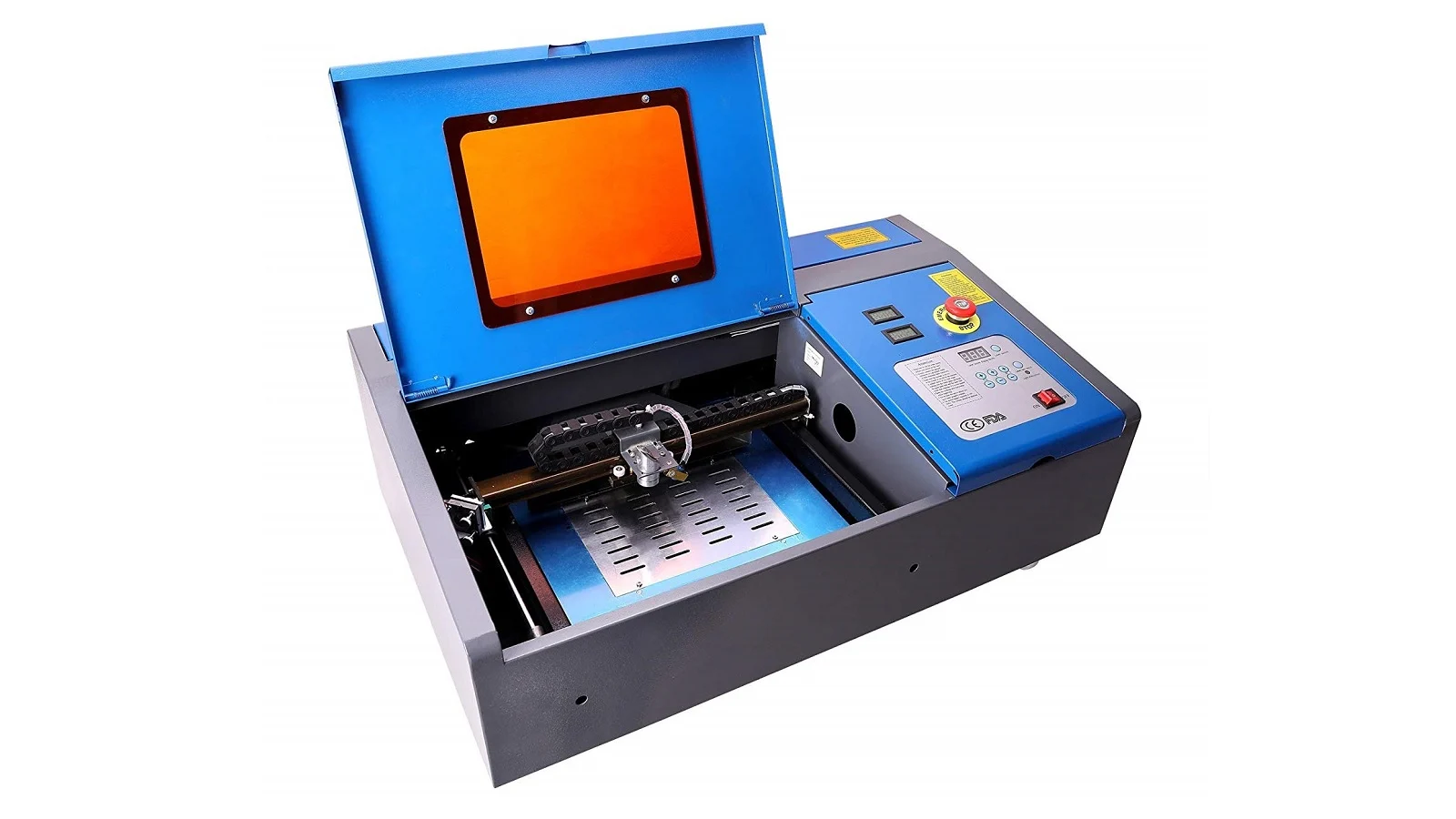Introduction
When it comes to engraving on curved surfaces, having the right laser engraver can make all the difference. Whether you are working on rounded metal pieces, cylindrical objects, or intricately shaped items, a laser engraver designed for curved surfaces can provide the precision and flexibility needed to achieve high-quality results.
Unlike traditional engraving methods, laser engravers utilize the power of focused laser beams to etch or mark surfaces with remarkable accuracy and speed. This technology allows for intricate designs, precise detailing, and the ability to work on a wide range of materials.
But with so many options available in the market, it can be overwhelming to choose the right laser engraver for curved surfaces. Factors such as laser technology, power and speed, rotary attachment, focusing mechanism, software compatibility, size and weight limitations, and budget considerations all play a crucial role in determining which engraver is best suited for your specific needs.
In this guide, we will explore the key factors to consider when choosing a laser engraver for curved surfaces. By understanding these factors, you will be able to make an informed decision and select a laser engraver that meets your requirements and helps you accomplish your engraving projects with precision and efficiency.
Factors to Consider When Choosing a Laser Engraver for Curved Surfaces
Choosing the right laser engraver for curved surfaces requires careful consideration of several key factors. Let’s take a closer look at each of these factors to help you make an informed decision:
1. Laser Technology: The type of laser technology used in the engraver is crucial for achieving accurate results on curved surfaces. CO2 lasers are commonly used for non-metal materials, while fiber lasers are ideal for metal surfaces. Make sure the engraver you choose is compatible with the materials you plan to work with.
2. Power and Speed: The power and speed capabilities of the laser engraver determine the efficiency and quality of the engraving process. High power ensures deep and precise engraving, while adjustable speed allows for control over the engraving process. Consider your specific requirements and choose an engraver with appropriate power and speed options.
3. Rotary Attachment: Engraving on curved surfaces often requires a rotary attachment. This feature allows the engraver to rotate the object while the laser moves across its surface, ensuring even and consistent engraving. Ensure that the laser engraver you select has a compatible and reliable rotary attachment option.
4. Focusing Mechanism: Achieving sharp and clear engravings on curved surfaces requires a versatile focusing mechanism. Look for an engraver with an adjustable focus lens or an autofocus feature, allowing you to maintain consistent focus regardless of the curvature of the object.
5. Software Compatibility: The software compatibility of the engraver is crucial for seamless design transfer and control. Ensure that the engraver you choose is compatible with popular design software such as CorelDRAW or Adobe Illustrator, and offers user-friendly software for easy operation.
6. Size and Weight Limitations: Consider the size and weight limitations of the laser engraver, especially if you have limited workspace or plan to transport the machine frequently. Ensure that the dimensions and weight of the engraver are suitable for your specific needs.
7. Budget Considerations: Laser engravers for curved surfaces come in various price ranges. Determine your budget and consider the long-term value and capabilities of the engraver. Investing in a high-quality engraver may prove more beneficial in the long run with enhanced features and durability.
By carefully evaluating these factors, you can select a laser engraver that is equipped to handle the unique challenges of engraving on curved surfaces. By making the right choice, you can achieve precise and professional results, taking your engraving projects to the next level.
Laser Technology
When choosing a laser engraver for curved surfaces, one of the most important factors to consider is the type of laser technology used. Different laser technologies are better suited for specific materials and offer varying levels of precision. Let’s explore some common laser technologies used in laser engravers:
CO2 Lasers: CO2 lasers are widely used for engraving non-metal materials like wood, acrylic, and leather. They produce a high-powered laser beam that is absorbed by these materials, allowing for precise and detailed engravings. CO2 lasers are an excellent choice for curved surfaces made of these materials.
Fiber Lasers: Fiber lasers, on the other hand, are highly effective for engraving on metal surfaces such as stainless steel, aluminum, and brass. These lasers use optical fibers to generate laser beams that are well-suited for marking and engraving on curved metal objects. If your engraving projects involve working with metals, consider a laser engraver with fiber laser technology.
Green Lasers: Green lasers are becoming increasingly popular due to their ability to provide high-quality engravings on a wider range of materials. They are often preferred for engraving on delicate and intricate surfaces, such as jewelry or electronics. Green lasers offer fine detailing and can capture complex designs on curved surfaces with exceptional precision.
It is essential to choose a laser engraver that utilizes the appropriate laser technology for your specific engraving needs. Consider the materials you plan to work with and select a laser engraver that is compatible with those materials. Additionally, ensure that the laser power and beam quality are suitable for achieving the desired engraving results on curved surfaces.
By understanding the different laser technologies available and their respective capabilities, you can make an informed decision when selecting a laser engraver for curved surfaces. This will ensure that you have the right technology at your disposal to achieve the highest level of precision and quality in your engraving projects.
Power and Speed
The power and speed capabilities of a laser engraver play a crucial role in determining the efficiency and quality of the engraving process, especially when working on curved surfaces. Here’s why these factors are important and what to consider when choosing a laser engraver:
Power: The power of the laser beam directly influences the depth and intensity of the engraving. Higher power allows for deeper and more precise engravings on curved surfaces. However, it’s important to note that too much power can cause material damage or distortion. Consider the materials you’ll be working with, and select an engraver with an appropriate power range for optimal results.
Speed: The speed at which the laser moves across the surface affects the overall engraving time and efficiency. Adjustability in speed is crucial, as different materials and intricacies of designs may require slower or faster movement. Being able to control the engraver’s speed allows for greater flexibility and precision in achieving desired results on curved surfaces.
When evaluating power and speed capabilities, it’s essential to strike a balance that suits both the material and design complexity. A laser engraver with adjustable power and speed settings provides versatility, allowing you to customize the engraving process based on your specific requirements.
Keep in mind that the power and speed requirements may vary depending on the material and depth of engraving desired. It’s advisable to test the engraving settings on sample pieces to find the optimal power and speed combination for achieving the desired results on curved surfaces.
Additionally, consider the overall capabilities of the laser engraver. Some machines offer advanced features like pulse control, which allows for greater control over the heat distribution and laser energy. These features can enhance the engraving process and result in better quality engravings on curved surfaces.
By choosing a laser engraver with appropriate power and speed capabilities, you can ensure efficient and precise engravings on curved surfaces. This will enable you to achieve the desired depth, quality, and intricacy in your designs, bringing your creative vision to life.
Rotary Attachment
When it comes to engraving on curved surfaces, a rotary attachment is a crucial feature to consider in a laser engraver. This attachment allows the engraver to rotate cylindrical or rounded objects while the laser moves across the surface, ensuring even and consistent engraving. Here’s why a rotary attachment is important and what to look for:
Even Engraving on Curved Surfaces: Engraving on curved surfaces without a rotary attachment can result in distorted or uneven designs. The rotation provided by the rotary attachment ensures that the laser maintains a constant focal distance, resulting in clean and accurate engravings. This is particularly important for cylindrical objects like bottles or rounded metal pieces.
Compatibility: Not all laser engravers offer a rotary attachment as a standard feature. Before making a purchase, check if the engraver has a compatible rotary attachment option or if one can be added as an accessory. Ensure that the attachment is designed to handle the size and weight of the objects you plan to engrave.
Adjustability: Look for a rotary attachment that allows for adjustable settings in terms of speed and grip strength. Different materials and shapes may require varying rotational speeds to achieve optimal results. Being able to control the grip strength ensures that the object stays securely in place during the engraving process.
Easy Installation and Removal: Ensure that the rotary attachment is easy to install and remove from the laser engraver. This allows for quick and seamless transitions between flat surface engraving and curved surface engraving. Look for attachments that come with clear installation instructions and require minimal adjustment or calibration.
Having a rotary attachment greatly expands the versatility and capabilities of a laser engraver, allowing you to work on a variety of curved objects, such as personalized drinkware, cylindrical containers, or rounded promotional items. It ensures that your designs are engraved accurately and consistently, enhancing the overall quality of your finished products.
Before purchasing a laser engraver, consider the availability and compatibility of a rotary attachment. Investing in an engraver that offers this feature will save you time and effort, while also broadening your range of engraving possibilities on curved surfaces.
Focusing Mechanism
A crucial factor to consider when choosing a laser engraver for curved surfaces is the focusing mechanism. The ability to achieve sharp and clear engravings on curved objects relies on a versatile and precise focusing mechanism. Here’s why this factor is important and what to look for:
Consistent Focusing: Curved surfaces pose a challenge when it comes to maintaining a consistent focus throughout the engraving process. A reliable focusing mechanism ensures that the laser beam remains at the correct focal distance, resulting in crisp and detailed engravings. Without proper focus, the engraved lines may appear blurry or uneven.
Adjustable Focus Lens: Look for an engraver that offers an adjustable focus lens. This feature allows you to manually adjust the focus to accommodate different curvatures of objects. The ability to fine-tune the focal distance ensures optimal clarity and depth in the engravings on curved surfaces.
Autofocus: Some laser engravers come equipped with an autofocus feature that automatically adjusts the focus based on the curvature of the object. This is particularly useful for engraving on objects with varying heights or complex curves. The autofocus functionality simplifies the engraving process and ensures consistent focus across the entire surface.
Focusing Tools and Indicators: A laser engraver with built-in focusing tools and indicators can greatly simplify and streamline the setup process. Look for machines that provide focusing aids such as red dot pointers, movable platforms, or clear focus indicators. These tools allow for precise alignment and ensure that the laser beam hits the intended spot on curved surfaces.
When working with curved surfaces, it’s essential to choose a laser engraver with a reliable and adjustable focusing mechanism. This will enable you to achieve sharp, clear, and consistent engravings that enhance the overall quality of your finished products.
Take the time to understand the focusing options available and select an engraver that offers the most suitable focusing mechanism for your needs. Whether it’s an adjustable focus lens or an autofocus feature, investing in a laser engraver with a robust focusing mechanism will contribute to the success and accuracy of your curved surface engraving projects.
Software Compatibility
When choosing a laser engraver for curved surfaces, it’s essential to consider software compatibility. The software used to operate the engraver plays a crucial role in design transfer, control, and overall workflow efficiency. Here’s why software compatibility is important and what factors to consider:
Design Transfer: The software compatibility ensures smooth transfer of your designs to the laser engraver. Look for engravers that support popular design software such as CorelDRAW, Adobe Illustrator, or AutoCAD. This compatibility allows you to easily import and convert your designs into engraving files, preserving the quality and precision of your artwork.
Ease of Use: User-friendly software interface is essential for efficient operation. Look for engravers that provide intuitive software with clear navigation and user-friendly features. This ensures that you can easily set up jobs, adjust settings, and monitor the engraving process without any technical difficulties or complications.
Control and Customization: Advanced software compatibility allows for greater control over the engraving process. Look for engravers that provide features like power and speed control, adjustable depth settings, and the ability to save and recall custom settings. This level of control ensures that you can achieve the desired engraving results on curved surfaces while maintaining consistency.
File Formats: Check the supported file formats of the engraver’s software. Ideally, it should be compatible with common image file formats like JPEG, PNG, or SVG, as well as vector-based formats for more complex designs. This flexibility in file formats ensures that you can work with a wide range of design files and easily incorporate them into your curved surface engraving projects.
Before making a purchase, consider your familiarity with the software and the learning curve required. If you already have experience with a particular software, it may be advantageous to choose an engraver that is compatible with that software to minimize the learning curve and maximize your productivity.
Ensure that the laser engraver’s software is regularly updated and supported by the manufacturer. This ensures that any potential software issues or compatibility updates are addressed promptly, allowing you to have an uninterrupted and reliable engraving experience over time.
By choosing a laser engraver with software compatibility that aligns with your design workflow, you can streamline the process, maintain control, and produce high-quality engravings on curved surfaces efficiently.
Size and Weight Limitations
When selecting a laser engraver for curved surfaces, it’s crucial to consider the size and weight limitations of the machine. These factors are important for various reasons, including workspace requirements and portability. Here’s what to consider when it comes to size and weight limitations:
Workspace Requirements: Measure your available workspace and compare it with the dimensions of the laser engraver. Ensure that the machine can comfortably fit within your workspace without compromising your ability to maneuver or access the engraving area. Take into account any additional space needed for ventilation, material handling, and other necessary equipment.
Object Size: Consider the maximum size of objects that the laser engraver can accommodate. If you plan to engrave large or bulky items, choose an engraver with a larger engraving area or a design that allows for the front or back panels to be opened for larger objects to fit through. It’s crucial to ensure that the curved objects you intend to engrave can physically fit within the engraving area.
Weight Limitations: Laser engravers vary in weight, and this factor is important for both installation and transportation purposes. It’s crucial to choose a machine that you can safely install and support within your workspace. Additionally, consider if the engraver needs to be transported frequently. In such cases, a lighter and more portable option would be ideal.
Stability and Durability: While it’s important to consider size and weight limitations, it’s equally crucial to ensure that the machine is stable and durable during operation. Look for an engraver made from high-quality materials that can withstand the vibrations and movements associated with the engraving process. Stability ensures accurate and consistent engravings on curved surfaces.
Before purchasing a laser engraver, assess your specific needs regarding workspace availability, object size, and portability requirements. Remember to account for any potential future projects that may require larger or heavier objects to be engraved.
By choosing a laser engraver that meets your size and weight limitations, you can ensure an efficient and comfortable working environment, as well as the ability to engrave a variety of curved objects without compromising on stability or durability.
Budget Considerations
Budget plays a vital role in selecting a laser engraver for curved surfaces. It’s important to determine your budget and consider the long-term value and capabilities of the engraver. Here are some key factors to consider when it comes to budget:
Initial Cost: The cost of the laser engraver is a significant consideration. Laser engravers come in a range of prices depending on their features, power, and capabilities. It’s important to strike a balance between your budget and the features you require for your specific engraving needs. Consider your long-term goals and whether investing in a higher-end engraver might be more cost-effective in the long run.
Operating Costs: In addition to the initial cost, consider the ongoing operating costs associated with the laser engraver. These costs may include consumables such as laser tubes, lenses, and maintenance parts. It’s important to factor in these expenses to ensure that they align with your budget and allow for sustainable operation of the engraver.
Upgradability: Consider the potential for future upgrades or adding accessories to the engraver. Although it may not be feasible to afford all the desired features initially, choosing a machine that offers upgradability allows you to enhance its capabilities over time as your budget allows. This can be a cost-effective approach, as it allows you to gradually expand the capabilities of your engraver without the need for a complete replacement.
Warranty and Support: Ensure that the laser engraver comes with a warranty and reliable customer support. A comprehensive warranty will protect your investment and provide peace of mind. In addition, having access to knowledgeable and responsive customer support can greatly assist in resolving any issues or queries that may arise during the engraving process.
Consider Long-Term Value: When evaluating the budget for a laser engraver, it’s important to consider the long-term value it offers. A higher-quality engraver may come with a higher price tag but offer improved performance, reliability, and longevity, ultimately resulting in lower costs and higher productivity over its lifetime.
By carefully considering your budget and the long-term value of the laser engraver, you can make an informed decision that aligns with your financial capabilities, while still obtaining a machine that meets your engraving needs and offers a satisfactory return on investment.
Conclusion
Choosing the right laser engraver for curved surfaces is essential for achieving precise and high-quality engravings. By considering the factors discussed in this guide, including laser technology, power and speed, rotary attachment, focusing mechanism, software compatibility, size and weight limitations, and budget considerations, you can make an informed decision that meets your specific engraving needs.
When it comes to laser technology, selecting the appropriate type of laser for the materials you’ll be working with is crucial. CO2 lasers are ideal for non-metal materials, while fiber lasers excel on metal surfaces. Green lasers offer versatility for intricate designs on a wide range of materials.
The power and speed capabilities of the laser engraver determine the efficiency and quality of the engraving process. Adjustability is key, allowing for customization based on the material and design complexity. In addition, a rotary attachment is essential for even engraving on curved surfaces, ensuring consistent focus and precise results.
The focusing mechanism and software compatibility are equally important. Look for an engraver with an adjustable focus lens or autofocus feature, along with software compatibility that allows for seamless design transfer, control, and customization of the engraving process.
Consider the size and weight limitations of the laser engraver, ensuring it fits within your workspace and can accommodate the size of objects you plan to engrave. Stability and durability are crucial for optimal engraving results on curved surfaces.
Last but not least, budget considerations play a significant role in choosing the right laser engraver. Assess your budget, including initial costs and operating expenses, while also considering the long-term value and upgradability of the machine.
By carefully evaluating these factors and making an informed decision, you can select a laser engraver that meets your specific needs and enables you to achieve exceptional engraving results on curved surfaces. Invest in a high-quality machine that combines the right technology, capabilities, and budget considerations to take your engraving projects to new heights of precision and creativity.







